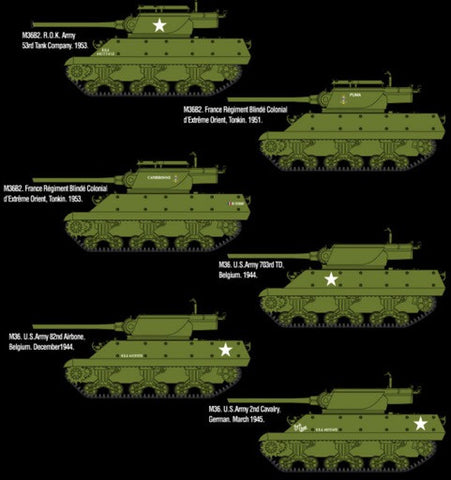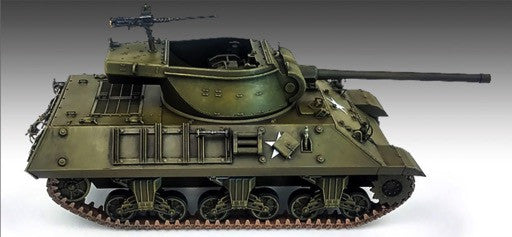
It could destroy any Soviet-made AFV deployed in that theater of operations. The M36 was well liked by its crews, being one of the few armored fighting vehicles available to US forces that could destroy heavy German tanks from a distance.Įxternal images M36 with ball mounted machine gun on co-driver's sideĪfter World War II, the M36 was used in the Korean War. These vehicles, designated M36B1, were rushed to the European Theater of Operations and used in combat alongside standard M36s. The need for 90 mm gunned tank destroyers was so urgent that, during October–December 1944, 187 conversions of standard Medium Tank M4A3 hulls were produced by Grand Blanc Arsenal. About 1,400 M36s were produced during the war. It was not until September 1944 that the vehicle first began to appear in the European Theater of Operations. Eleven additional rounds of ammunition were stored inside the counterweight. The M36 had a large bustle at the rear of its turret which provided a counterweight for the main gun.

Postwar, a folding armored roof kit was developed to provide some protection from shell fragments, as with the M10. Like all US tank destroyers, the turret was open-topped to save weight and provide better observation. The prototype was designated T71 Gun Motor Carriage upon standardization the designation was changed to 90 mm Gun Motor Carriage M36 in June 1944. After testing, an order for 500 was issued. The first M36 prototype was completed in March 1943, with a new turret mounting the 90 mm M3 gun on a standard M10 chassis. This was several months before any Western Allied unit encountered a Tiger in combat, as the British First Army in Tunisia was the first western Allied unit to encounter the Tiger I in the leadup to the Battle of the Kasserine Pass at the start of 1943, and well over a year before any US unit encountered a Panther in combat. This was foreseen, however, and in September, 1942 American engineers had begun designing a new tank destroyer armed with the M3 90 mm gun.

tank destroyer, the 3in Gun Motor Carriage M10, was rapidly becoming obsolete, because its main armament, the 3in M7 gun, had difficulty engaging these new tanks past 500 metres. With the advent of heavy German armor such as the Panther and Tiger, the standard U.S. 90 mm GMC M36 during the Battle of the Bulge in January, 1945.


 0 kommentar(er)
0 kommentar(er)
